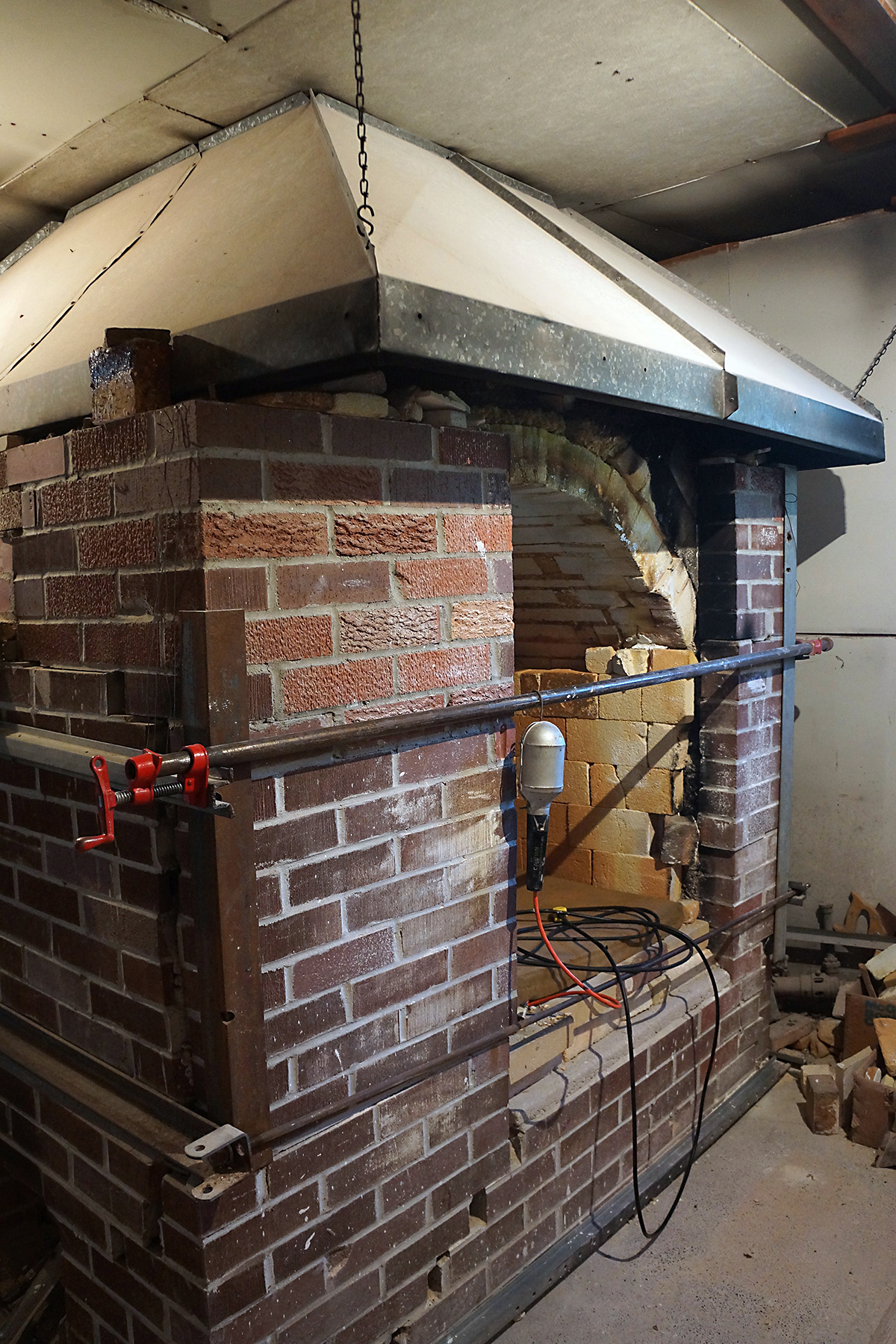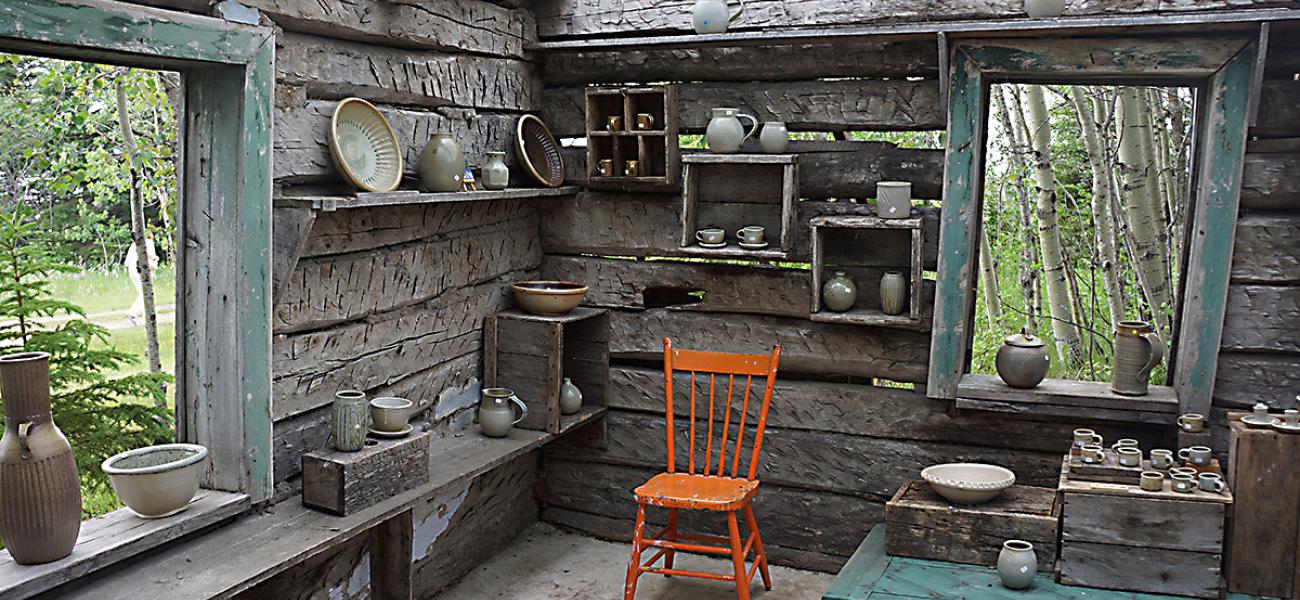Four of Canada’s celebrated potters, Harlan House, Kirk Creed, Gordon Hutchens, and Wayne Ngan, have set admirable examples of how to build a sustainable life as a ceramic artist. They believe that what one creates will add value to another’s life and be treasured by future generations, not discarded to become part of the local landfill when a trend has passed. Along with many others, they were embracing green practices before the term became fashionable. Reuse, repurpose, and recycle are the keystones of their life.
In 1974, the city of Calgary targeted Harlan House,s studio for demolition. As a result, Harlan and his wife, Maureen, settled in the small village of Lonsdale, Ontario. Over the course of four decades, the couple used all the ingenuity they could muster to transform the village’s old timber hotel into their home and its carriage house into Harlan’s studio.
 Harlan broke up the carriage house into several distinct working spaces. The upper level became a gallery and office, while the lower level was separated into a slip casting room, a damp room, a space for throwing and trimming, a glaze area, and a kiln room. He left another room vacant for building another, larger gas kiln in the future. Like most potters, Harlan did not have the money to buy everything brand-new for his workshop, but he also didn’t want to; new and flashy will never be a part of Harlan’s style. The mixer for the slip used in his casting work was converted from a stainless steel machine a local dairy had discarded. The damp room, where he carefully places his porcelain pots to dry, was created out of recycled house bricks and plaster shelving, along with an array of old windows donated by a local builder. Harlan likes to keep an eye on his work while it is drying so that he can correct any pesky warping that might occur, and a drying room with windows was the perfect means to do that without having to open the door and let the humidity escape.
Harlan broke up the carriage house into several distinct working spaces. The upper level became a gallery and office, while the lower level was separated into a slip casting room, a damp room, a space for throwing and trimming, a glaze area, and a kiln room. He left another room vacant for building another, larger gas kiln in the future. Like most potters, Harlan did not have the money to buy everything brand-new for his workshop, but he also didn’t want to; new and flashy will never be a part of Harlan’s style. The mixer for the slip used in his casting work was converted from a stainless steel machine a local dairy had discarded. The damp room, where he carefully places his porcelain pots to dry, was created out of recycled house bricks and plaster shelving, along with an array of old windows donated by a local builder. Harlan likes to keep an eye on his work while it is drying so that he can correct any pesky warping that might occur, and a drying room with windows was the perfect means to do that without having to open the door and let the humidity escape.
When it comes to tools, Harlan just has to look at a found material to figure out if it can be repurposed. He bought up an entire box of stainless steel bicycle spokes one day. They are perfect for shaping the rims of his large platters as they are drying on their bats. The bonus is that there is never the rust that comes with using other types of metal for trimming and shaping.


